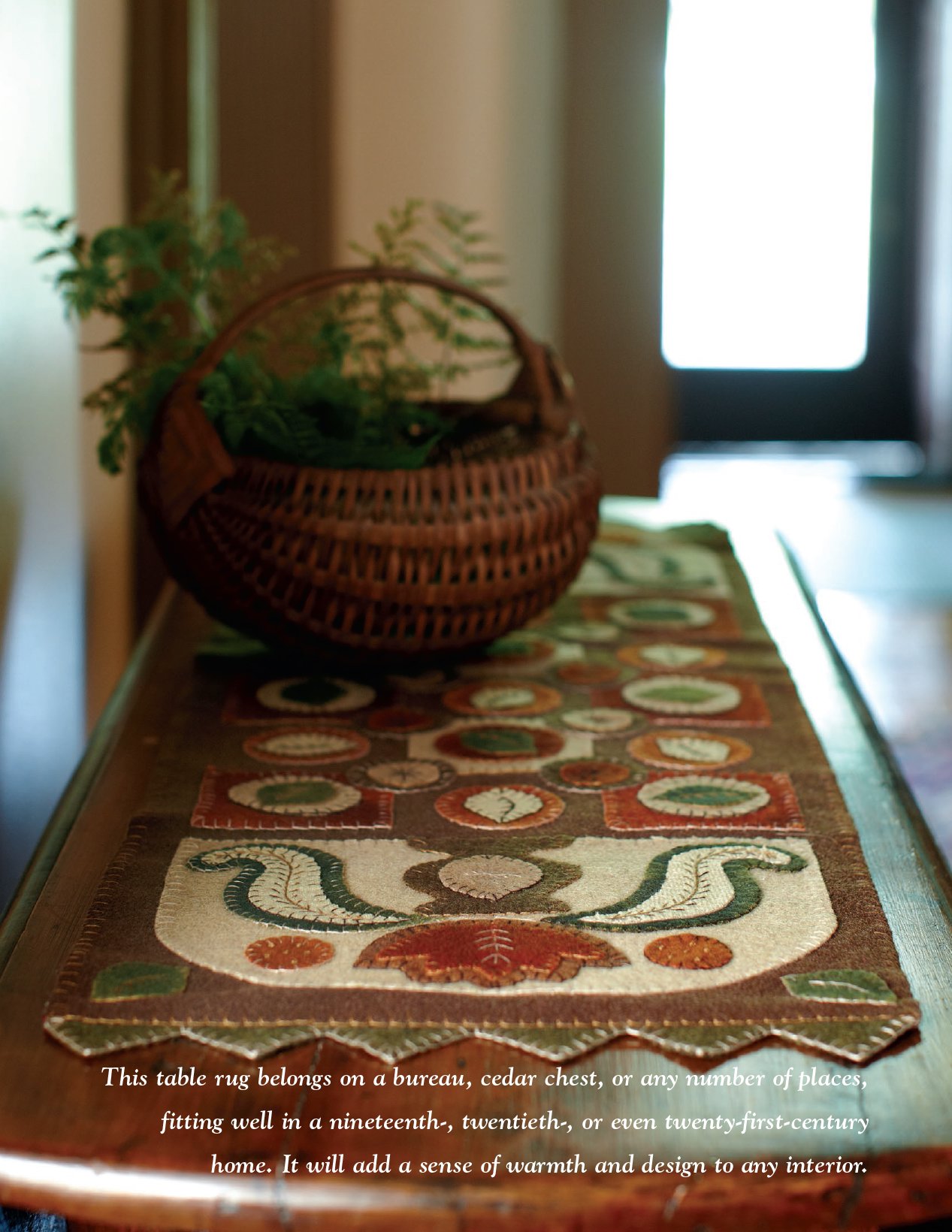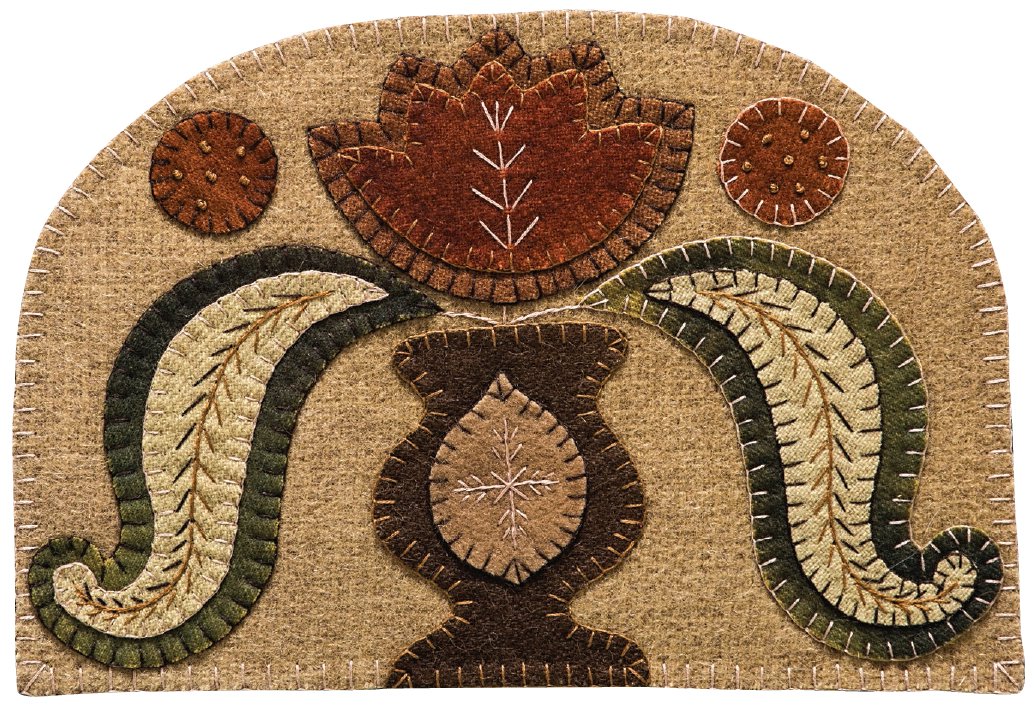
Finished Table Rug: 35˝ × 11¾˝
I have spent a great deal of time studying the early dower chest, also called a blanket box. These large wooden boxes were used for storage of items including blankets, sheets, quilts, clothing, and many other household items. Some of them were highly decorated while others simply bore the owner’s initials and a date. They are found in many regions of the eastern and midwestern United States and were painted with motifs such as tulips, birds, unicorns, urns, eagles, and pinwheels to name just a few. These were well crafted and important pieces of furniture and are now highly sought after works of folk art.

Early Pennsylvania German blanket boxes such as this one were often highly decorated.
What I like about the design of this table rug is the symmetry, and the mixture of folk art motifs with a very geometric pattern. The tulips lie on an arched panel that mirrors the panels often found on an early blanket box. The tulip panels give definition to the ends of the piece and allow it to be used on a table. An item placed in the center won’t cover up the focal point of the design. It would also be striking as a wallhanging.

MATERIALS
Wool
•1 dark brown rectangle 34˝ × 12¾˝ for background
•1 brown rectangle 33˝ × 11¾˝ for backing
•1 tan rectangle 8˝ × 32˝ for arched panels, squares, and circles
•1 dark orange rectangle 4˝ × 20˝ for squares
•1 orange rectangle 4˝ × 20˝ for circles
•1 brown rectangle 5˝ × 11˝ for circles
•1 green rectangle 10˝ × 12˝ for leaves
•1 light green rectangle 7˝ × 8˝ for leaves
•1 medium brown rectangle 3˝ × 8˝ for tulips
•1 dark orange rectangle 3½˝ × 6˝ for tulip accents and circles
•1 dark brown rectangle 4˝ × 6˝ for urns
•1 light brown rectangle 2˝ × 4½˝ for urn accents
•1 dark green rectangle 4˝ × 12˝ for sawtooth borders
Other materials
•Embroidery floss: 2 skeins of dark mustard and 1 each of antique white and dark brown

GETTING STARTED
Refer to Preparing the Wool Pieces as needed for additional details on these steps.
1 Cut out the wool appliqué pieces using the patterns.
2 Lay out your appliqués according to the pattern to be sure you have all of the pieces.

SEWING FUN
Refer to Stitching Your Project for details on the blanket stitch and embroidery stitches.
1 Pin the tan arched panels to each end of the background pieces, placing each arch 1¼˝ from the end.
2 Blanket stitch the arches to the backing.
3 Stitch the urn, leaves, tulip, and circles to the panel. Add embroidery details.
4 Lay out all of the squares on the background and pin, leaving ½˝ between the first row of squares and the bottom of each arched panel.

Carefully space the squares before stitching.

Details of stitching
5 Stitch the squares to the background.
6 Lay out and pin the 7 orange 2¼˝ circles between the squares, making sure they are centered.
7 Stitch the circles to the background.
8 Stitch the remaining circles and leaves. Embroider the details.
9 Stitch and embroider the leaves in the corners.
10 Using steam, press the entire finished piece on the wrong side.
11 Trim the finished piece to 33˝ × 11¾˝. Refer to Finishing Your Project as needed.
12 Blanket stitch the outer edges of both sawtooth borders.
13 Pin the sawtooth borders between the finished piece and the backing.
14 Blanket stitch around the entire piece, stitching both the front and the back of the sawtooth borders.

Blanket stitch the edges.
15 Using steam, press the entire finished piece.

Details of the squares and circles